Most of our favorite indoor plants come from tropical regions with relatively high humidity. While nurseries perfect the humidity levels to an ideal range for plants to thrive, your home’s humidity levels may be compromising their growth.
Humidifiers increase the moisture availability in indoor air and create optimal humidity conditions for plants. Humidifiers can help prevent wilting and yellowing leaves and improve plant growth and flowering abundance. Air plants, Boston Ferns, Elephant Ears, Peace Lily and Pothos in particular, will thrive in the increased moisture created by a humidifier.
But not all humidifiers are a right fit for your plants, nor do all plant species need high moisture levels. To know which plants reap the benefits of increased humidity and which humidifiers to use to gain the most advantage, here is all you need to know.
Are Humidifiers Beneficial to Plants?
To understand the importance of humidifiers, you really need to understand why humidity matters for houseplants.
Humidity refers to the amount of water vapor present in the atmosphere. The more moisture in the environment, the higher the humidity. Conversely, low humidity levels indicate less moisture and drier air.
Most house plants are tropical plants that grow in environments with high moisture levels regulating their growth – they do not do well in low moisture surroundings.
Stomata
Plants have numerous tiny spores under their leaves called stomata. These pores help cool the plant and enable nutrient and water flow through evaporation.
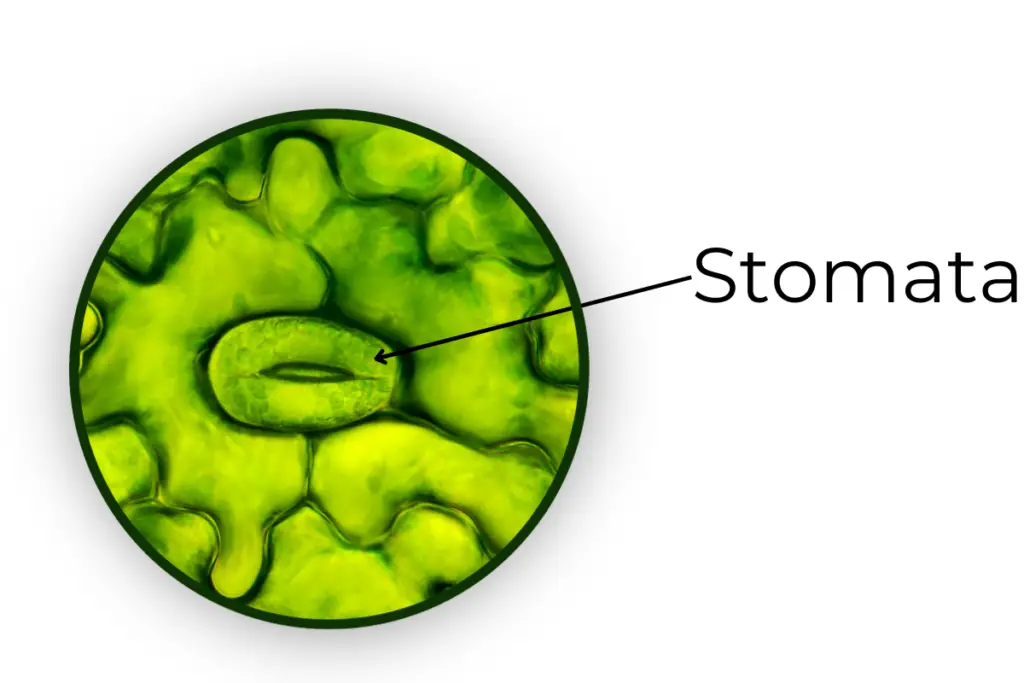
Stomata also play a significant role in photosynthesis, enabling plants to make food (sugar) by taking in carbon dioxide and releasing oxygen. Unfortunately, plants excessively lose water when in low moisture conditions.
To prevent losing more water (by transpiration), plants close their stomata if they are unable to replace the water as quickly as they are losing it.
A plants’ ability to produce food by absorbing carbon dioxide and releasing oxygen is drastically lowered in these conditions, which stunts their growth.
Humidity
Our home air is, regrettably, dry most of the time. In the summertime, cold air blowing from an air conditioner can suck even more moisture from our homes.
Likewise, the heating system during winters makes the atmosphere dry, leading to plant dehydration. This explains why botanical gardens blast humid air to retain the natural look of tropical plants, or why they keep certain plants in greenhouses
So, if you haven’t been fortunate enough to experience indoor plant growth, low humidity is quite possibly to blame, and a humidifier may help your plants.
It’s important to note that diffusers and essential oils also affect plants, both negatively and positively depending on the oil and diffuser type and location.
Signs Your Plant Needs Humidity
Plants are more like humans. They have nutritional needs and require an optimal environment to survive. Slight temperature fluctuations and environmental changes take a toll on their health.
So, when you bring plants from their natural habitat into your dry indoors, they’ll show stress signs. A few tell-tale signs your plants need attention include but aren’t limited to the following:
Wilting and Yellow Leaves
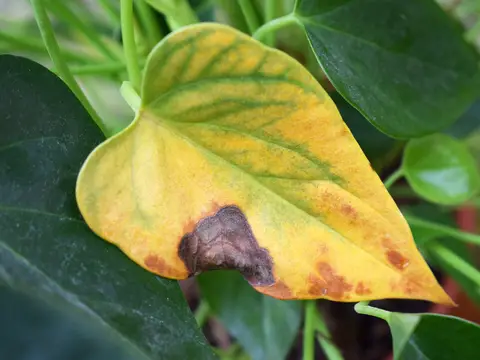
Although low humidity isn’t always the cause of wilting leaves – excessive sunlight can be the source, too – if you have placed your plants in shade or away from a window, it’s time to check your home’s moisture levels.
You’ll observe dropping and brown leaves that are not pleasant to look at. Not balancing the humidity levels can permanently damage your plants leaves and inhibit growth.
Brown Corners
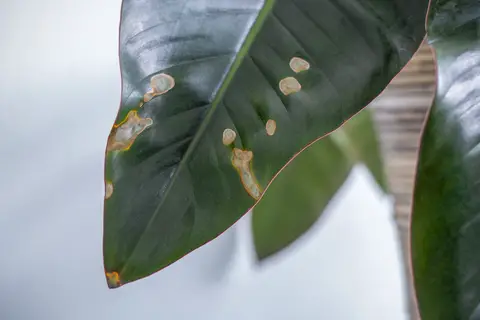
When your indoor humidity drops below 50%, your plant’s leaves can turn crispy and brown on the edges. You might have commonly seen such leaves passing by your neighbors’ landscape in the Fall. But if a houseplant behaves similarly, low moisture levels are likely the cause.
Watering plants alone doesn’t help because plants need more than soil moisture alone. The atmosphere must also contain sufficient moisture for their stomata to remain open.
Dull Looking Leaves
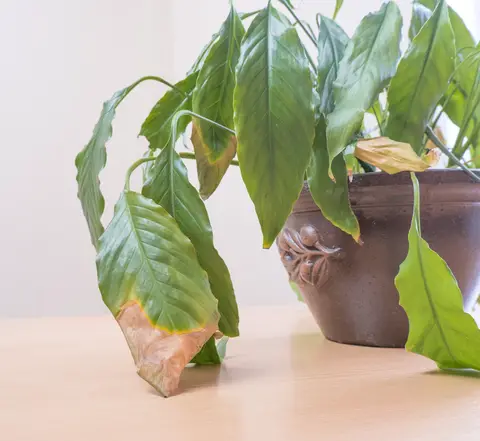
The unhealthy appearance of houseplants is less alarming than the signs discussed above, but overlooking it isn’t wise either. The plant leaves might not be brown or yellow, but they appear unhealthy. Unlike lush green plants, such leaves are typically soft to touch and compromise the aesthetic appeal of your plant.
Stunted Growth
As stated earlier, plants fail to photosynthesize in dry conditions, leading to stunted growth. With limited nutrients, they focus more on surviving than growing.
Ideal Humidity Range for Different Plants
Central heating during winter makes our life easy. But your indoor plants endure a lot during this phase. Although no homeowner intentionally harms their plants, not everyone knows that dry air is the leading cause.
Luckily, rectifying humidity levels can prevent the issue. However, you must familiarize yourself with the plant’s needs to set an ideal moisture level. The plant species and its development stage are the two main factors that determine their humidity requirements.
Most houseplants, including Pothos, Ferns, English Ivy, Areca Palm, and Peace Lily, are native to tropical and sub-tropical environments. They are a popular choice among most homeowners, given their air-purifying abilities. But tropical regions are all about heavy rainfalls and humid climates.
Studies reveal they experience 70-90% humidity levels, which is substantially higher than our home environment – especially when heating systems absorb the moisture during winters or air conditioners in the summer.
But you do not necessarily need to raise the moisture levels between 70-90% because most houseplants will still thrive at 40-60% on average. A quick look into the humidity ranges of different plants can explain this further.
0-20%
The air is too dry for your houseplants to survive. Not only will they wilt within a few days, but they’ll permanently die after a few weeks. However, the same cannot be said for all indoor plants. Low moisture levels shouldn’t be a problem if you own succulents or cacti.
20-40%
Indoor places typically have humidity levels between 20-40%. A few plants might survive well, but tropical plants won’t produce flowers, resulting in limp leaves.
40-60%
This is an optimal humidity range for indoor places and ideal for most houseplants to survive. If you own species that require slightly higher humidity, consider installing a humidifier closer to the plant to adjust the moisture levels.
For instance, large, leafy plants, including Peace Lily and Monsteras, love high humidity. Although they manage fine in the humidity range optimal for humans, they wouldn’t mind slightly raised moisture levels.
60-80%
This humidity level is perfect for all tropical plants because it mimics their home environment. Greenhouses typically keep the humidity between 60-80%. However, this range is uncomfortable for you and your family and above the optimal range for humans (30-50%).
But plants like Boston Ferns and Orchids like moist environments. In fact, Boston Ferns grow well in considerably humid climates. If you own Ferns, consider placing them in your kitchen or bathroom to make up for a comfortable surrounding.
80-90%
Maintaining 80-90% isn’t possible indoors. But, a few tropical plants like pineapples require highly humid environments to grow. For instance, experts recommend keeping 85-90% humidity for pineapples and 85% for Kale.
However, the United States Environmental Protection Agency (EPA) recommends keeping humidity below 60% – ideally between 30-50%. This might not be a suitable humidity for a few houseplants, but others would thrive well in this range.
The EPA highlights this humidity range protects your home and possessions. Because high humidity levels, although ideal for indoor plants, may cause several more serious issues around your home.
For instance, more moisture encourages mold growth and damages furniture, brickwork and floor. So, if you own a species that requires relatively high humidity – say above 60% – consider placing them in a separate room and tweaking the room’s moisture levels using a humidifier.
Which Plants Need a Humidifier?
Most houseplants benefit from moderate humidity. However, a few prefer relatively high humidity levels. They require a humidifier to simulate their natural habitat and sustain well. Some popular ones include the following.
- Air plants need high relative humidity levels and water to survive well. Because these plants aren’t rooted in the soil, they depend on the air to provide optimal moisture levels.
- Boston Ferns are known for their rich foliage that can brighten up any part of your home. Because of their high humidity needs, people typically place them in bathrooms. You can mimic their natural environment by installing a humidifier closer to them.
- Bamboo. This elegant-looking plant contains delicate leaves and thrives well in moist surroundings. Because they originate from tropical forests, increasing your indoor humidity is essential to their survival.
- Orchids are yet another humidity-loving plant species. However, they do not like too much water. So, maintaining humidity levels and holding back from overwatering is a perfect combo to encourage growth.
- Alocasia, also known as Elephant Ears, is popular among homeowners due to its striking foliage and stunning appearance. However, the plant leaves turning brown isn’t uncommon. That’s because they love highly humid surroundings, and if your home doesn’t provide one, they’ll soon become unsightly.
- Dracaena. Also called the corn plant, Dracaena has thick steam and lush green leaves with a yellow stripe in the middle. Although they are relatively simple to maintain, you’d need to adjust your indoor humidity to a higher optimal level because they prefer humid surroundings.
Is a Humidifier Good for Succulents?
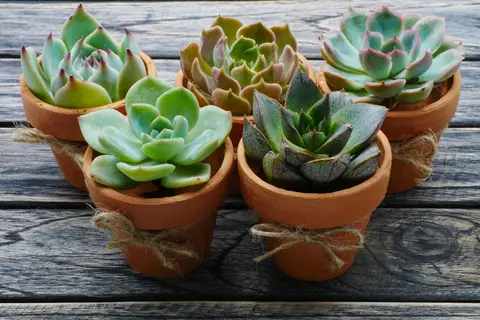
Succulents are made to tolerate limited water better than other indoor plants. Their thick leaves and stems allow them to store water, unlike other houseplants that need water from the outside environment to meet their needs.
Therefore, these houseplants do not like humidity. They may rot and lose leaves when kept in a humid environment. So, if you have watered your succulents a few days back and the humidity levels in your home are too high, it’s time to move your plant into a dry area with minimal moisture levels.
Humid air and wet soil make up for unfavorable conditions for succulents. They keep the soil from drying sufficiently, leading to fungal problems and ultimately plant death.
Is a Humidifier Good for a Snake Plant?
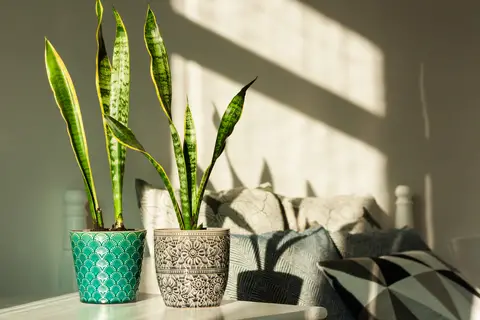
Snake Plants are indigenous to dry habitats. They need considerable sunlight and quick draining soil to thrive. Besides, generous humidity contributes well to their survival.
These plants, being succulents, store water in their leaves and stem and retain it when needed. So, high moisture levels may compromise their health, impacting their aesthetics.
Because a humidifier raises moisture levels, it’ll keep the Snake Plant from drying out the soil properly. So, the lower the humidity, the better.
Drawbacks of Humidifiers for Plants?
As long as you know your plants’ needs and set the humidifier to an optimal range, it will benefit your houseplants for the most part.
Yes, it won’t transform your home into a greenhouse, but it makes a difference. The key, however, is to adjust the humidity levels keeping the plant and your requirements in mind.
That said, the only drawback associated with humidifiers is that of maintenance. You must clean the humidifier’s tanks and filters to avoid potential health problems.
Lastly, a few humidifiers produce noise which can compromise your sleep. Nonetheless, you can always opt for quiet models to resolve the problem.
Different Types of Humidifiers
The most suitable humidifiers for plants and standard models for humans operate similarly. These devices have varying discharge rates, allowing you to adjust them per your preferences.
Your houseplants require occasional and regulated humidity for optimal growth, and these devices let you achieve that. There are two primary humidifier types – evaporative or ultrasonic discharge systems.
1. Evaporative
Evaporative humidifiers produce a cool mist. They feature a filtering wick that absorbs the tank water. A fan blows air over the wick causing the water to evaporate into the surrounding atmosphere.
This humidifier creates a visible mist and provides decent humidity levels. However, the fan produces an uncomfortable noise. These humidifiers cannot over-moisturize the air if there’s enough humidity indoors – no matter how long it works.
2. Ultrasonic
Ultrasonic humidifiers also generate cool mist but do it differently than evaporative humidifiers. They use a vibrating plate to produce a cool mist.
They do not feature a heating element or filter but steam the water through vibrations. When the vibrating plate performs its function, it creates fine water droplets.
These humidifiers also don’t require a filter change, nor do they feature a water-heating element. The former brings added convenience, and the latter makes it safer. The only downside is that it lacks mold prevention and bacteria reduction.
Cool Mist Vs. Warm Mist
Cool mist typically comes from evaporative and ultrasonic humidifiers, while warm mist humidifiers produce warm droplets. Humidifiers that result in a warm mist feature a heating unit that boils the water, turning liquid into vapors.
Warm mist humidifiers are functional devices because the heating process lets out pure water into your space. Besides, they also decrease the bacteria in your surroundings due to the minerals left inside the tank.
They are also quieter than cool mist humidifiers because they do not include a fan. Nonetheless, the heating element makes your family vulnerable to accidents and spills.
Which Humidifiers Are Best for Plants?
So long as you purchase a quality humidifier that functions optimally, it’ll work fine for your houseplants. But because we have cool vs warm mist devices available commercially, some homeowners question the right fit for their plants.
Technically both humidifiers perform the same function despite featuring different technologies. The only noticeable difference, however, is that of energy efficiency.
Cool mist humidifiers are energy-efficient due to their filtration system, unlike warm mist devices. So, if you’re looking for an option that reduces energy consumption (and utility bills), you may want to consider a cool mist humidifier.
When Should I Use a Humidifier for My Plants?
Running humidifiers during winter is essential for your indoor plants due to dry indoor air. However, if you live in a region with low humidity during summers, you’d need a humidifier to cater to your plant needs and ensure optimal foliage and growth.
The key is to measure your home humidity levels using a hygrometer. You can then adjust the moisture levels to a suitable range.
How Often Should I Run a Humidifier for Plants?
A humidifier can be operated for 4-5 hours in the morning or around midday to improve the humidity for plants. But avoid running it too late in the evening.
Turning on a humidifier late in the evening leaves excessive moisture in the air when houseplants do not need it. This can encourage mold and fungal growth, deteriorating your plant health and indoor environment.
How Close Should I Place the Humidifier to Plants?
A humidifier should be placed 3-6 feet away from your houseplants. The distance will determines the amount of humidity your plant directly receives. It is also best to ensure the outlet of the humidifier is not directed towards the plant.
Placing the humidifier too close or far from plants won’t serve the purpose. The device beside your plants will cause condensed water to accumulate on the soil and leaves. On the flip side, putting it too far won’t suffice the plant humidity requirements.
Should a Humidifier Be Above or Below the Plants?
Consider placing a humidifier above your plants to ensure maximum moisture levels. Typically, 2-4 feet above a plant encourages air circulation and provides plants with the required humidity.
Do Plants Need Humidity At Night?
High humidity levels at night are not recommended for indoor plants.
When the plant leaves stay wet for long without sunlight to dry them, they’ll develop fungus. However, if the indoor air is relatively dry during winter nights, turning on a humidifier doesn’t hurt. Again, you must monitor your home’s humidity levels to ensure they remain within optimal levels.
